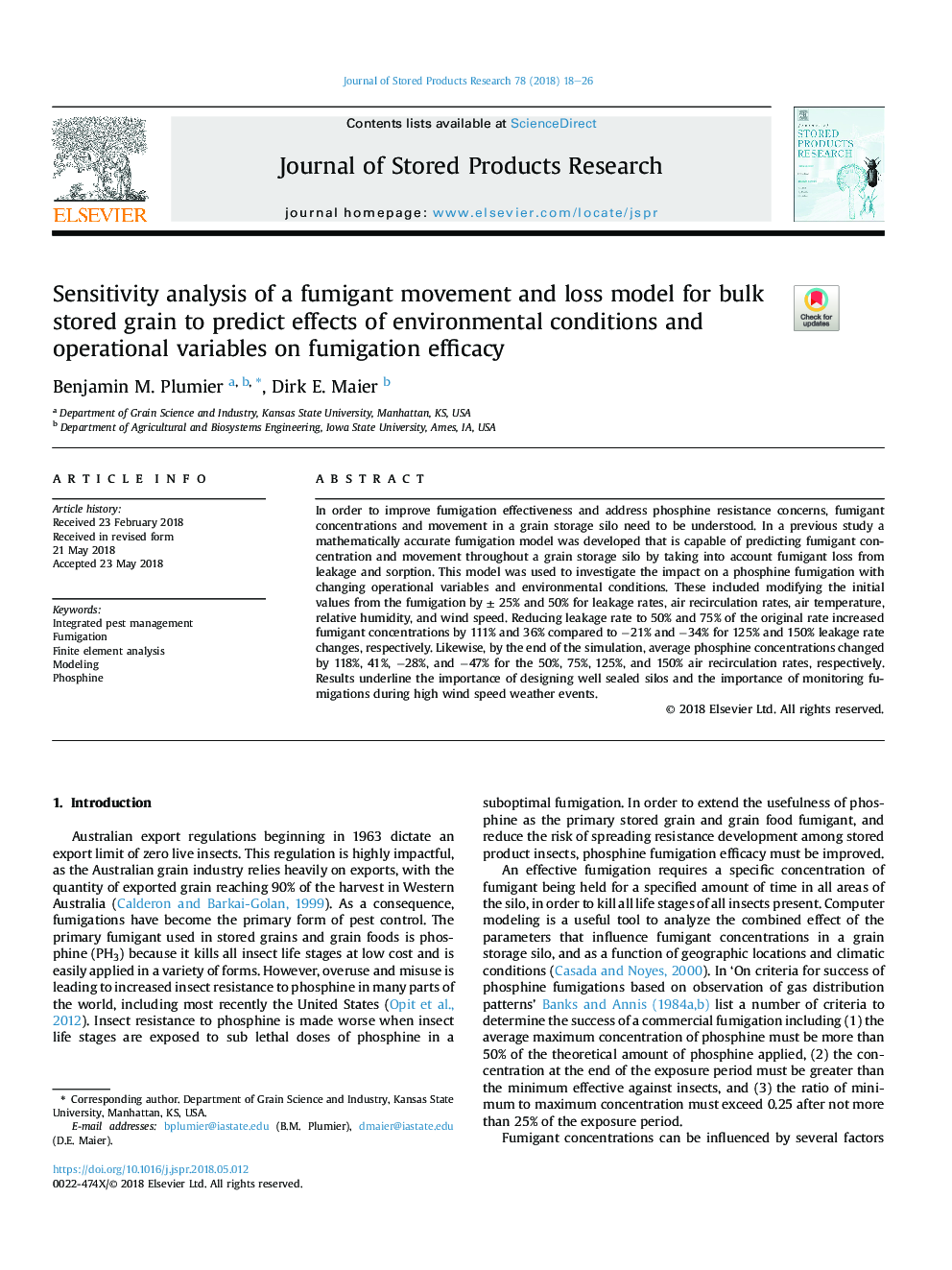| Article ID | Journal | Published Year | Pages | File Type |
|---|---|---|---|---|
| 8881585 | Journal of Stored Products Research | 2018 | 9 Pages |
Abstract
In order to improve fumigation effectiveness and address phosphine resistance concerns, fumigant concentrations and movement in a grain storage silo need to be understood. In a previous study a mathematically accurate fumigation model was developed that is capable of predicting fumigant concentration and movement throughout a grain storage silo by taking into account fumigant loss from leakage and sorption. This model was used to investigate the impact on a phosphine fumigation with changing operational variables and environmental conditions. These included modifying the initial values from the fumigation by ± 25% and 50% for leakage rates, air recirculation rates, air temperature, relative humidity, and wind speed. Reducing leakage rate to 50% and 75% of the original rate increased fumigant concentrations by 111% and 36% compared to â21% and â34% for 125% and 150% leakage rate changes, respectively. Likewise, by the end of the simulation, average phosphine concentrations changed by 118%, 41%, â28%, and â47% for the 50%, 75%, 125%, and 150% air recirculation rates, respectively. Results underline the importance of designing well sealed silos and the importance of monitoring fumigations during high wind speed weather events.
Related Topics
Life Sciences
Agricultural and Biological Sciences
Agronomy and Crop Science
Authors
Benjamin M. Plumier, Dirk E. Maier,
